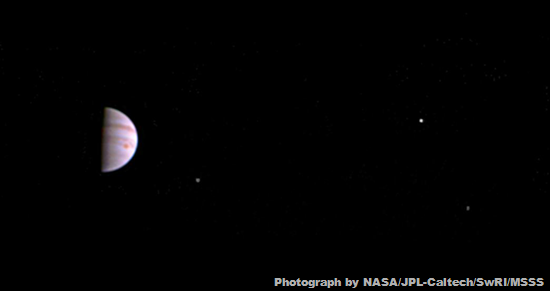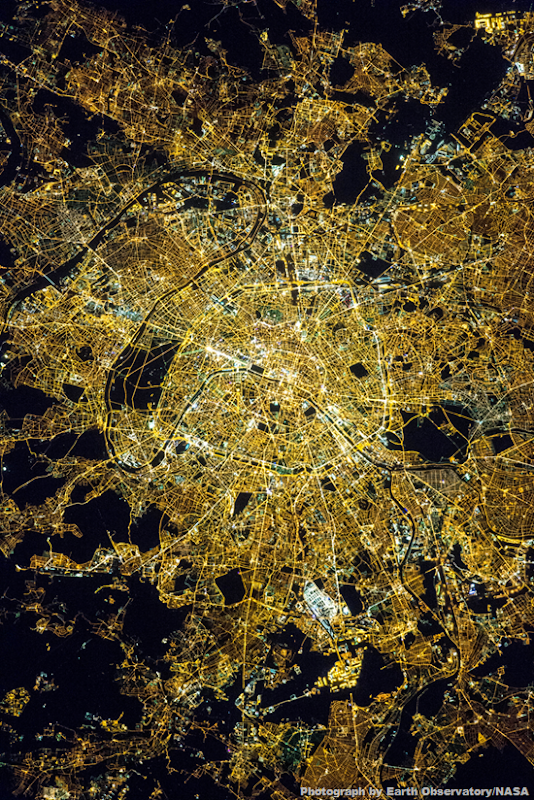
Gaze Into the Deepest Ever View of the Orion Nebula
By Michael Greshko, National Geographic News, 15 July 2016.
By Michael Greshko, National Geographic News, 15 July 2016.
This week, one of Saturn's moons pulls off an optical illusion, a brilliant galaxy creates new stars at an extraordinary rate, and a satellite spies rippling cloud banks hovering off the coast of Namibia.
1. Brilliant Birthplace
The European Southern Observatory's Very Large Telescope recently took this astonishing infrared image of the Orion Nebula, seen here in false colour. It's the deepest view yet of the stellar nursery.
2. In Jupiter's Thrall
On July 10, NASA's Juno spacecraft snapped its first image of Jupiter after successfully entering the giant planet's orbit. Three of Jupiter's largest moons - Io, Europa, and Ganymede, from left to right - are also visible.
3. Vive la France!
Astronauts on board the International Space Station recently took this photograph of Paris - often referred to as the "City of Light" - while passing over the metropolis around local midnight.
4. It's Not a Trick, It's an Illusion
Seen from NASA's Cassini probe, Saturn's moon Tethys appears to float above the planet's north pole. However, it's an optical illusion: The small moon orbits almost exactly in Saturn's equatorial plane.
5. Swirling Starburst
Captured here by Hubble, this spiral galaxy some 300 million light-years away is going through an extraordinarily high rate of star formation - causing astronomers to dub it a "starburst galaxy."
6. Making Waves
In this picture from NASA's Terra satellite, distinct rippling cloud banks hang off the coast of Namibia. The features are formed by yo-yoing clouds that are alternately pulled down by gravity and buoyed up by warm, dry air.
7. Frankenstein's Monster
The galaxy UGC 1382 was thought to be only the central glowing orb seen here. But new scans in ultraviolet and radio waves (green) reveal its previously hidden matter - showing it's one of the largest isolated galaxies yet found.







No comments:
Post a Comment
Please adhere to proper blog etiquette when posting your comments. This blog owner will exercise his absolution discretion in allowing or rejecting any comments that are deemed seditious, defamatory, libelous, racist, vulgar, insulting, and other remarks that exhibit similar characteristics. If you insist on using anonymous comments, please write your name or other IDs at the end of your message.